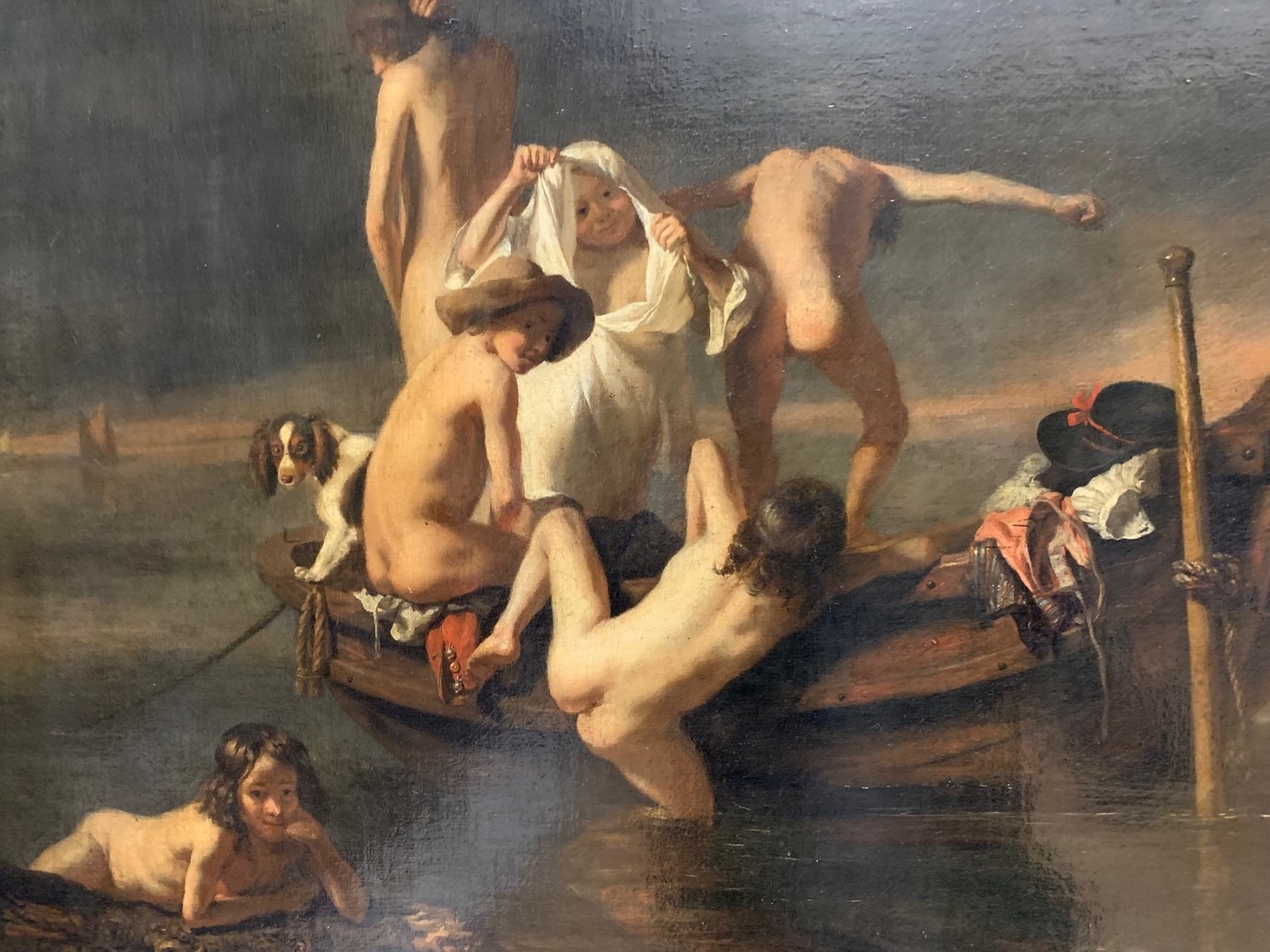

Bathers
My Louvre by Antoine Compagnon

Bathers
This Bathing by Nicolaes Maes, or attributed to Nicolaes Maes, the seventeenth-century Dutch painter, is not one of the salient works in the Louvre (Richelieu, room 845). I have stopped before it this morning because, only yesterday, I was reading a little book on swimming by my friend Chantal Thomas, member of the Académie Française. Such are the coincidences, or associations of ideas, that guide a walk through the museum. Chantal Thomas, a great swimmer if there ever was one, reminds us that swimming was traditionally practiced in the nude until the advent of leisure activities, sea bathing, and beach culture, in the late-nineteenth century. The exercise was therefore reserved to men. Maes’s painting depicts a group of small boys gathered around a boat moored not far from the shore. They leap into the water, dive, re-emerge. They do not know how to swim, but they enjoy themselves, refresh themselves, of a summer evening. In the distance is a sail. Bathers are a genre of painting, from Michelangelo’s Battle of Cascina to Thomas Eakins’s The Swimming Hole, from Hippolyte Flandrin’s venerable Young Male Nude Seated Beside the Sea (Sully, room 940) to David Hockney’s Swimming Pool, but when I leave Nicolaes Maes, my steps lead me to Poussin’s Moses Saved from the Waters, where the servant has leapt into the river to retrieve the child in its basket (Richelieu, room 825).